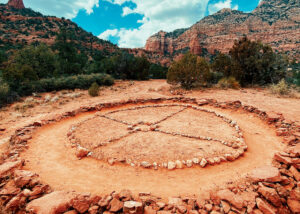I have had a recurring dream that began after a trip to Italy. During my time there I visited at least 50 churches and was struck with the fact that many claimed to be the home of sacred relics—especially bits of the cross of Christ. After reporting this to my historian friend, he responded with the statement that if all the acclaimed “pieces of the cross” in Italy were in one place there would be enough to fill the Sistine Chapel.
In my dream I am a pastor of a church experiencing a huge snow storm. The power is off and no one has any heat. Amazingly the surrounding community comes to the church in which I work thinking that they will find sanctuary, safety and the necessities of life. Because we need heat, several people begin dismantling the pews for firewood, several others cut a hole in the roof for the smoke to escape, and several others begin looking for kindling to light the fire. The search for kindling becomes desperate and we begin to realize that we will not be able to light the fire needed to survive.
In my dream I have an entire room filled with the sacred pieces of the cross, sacred bits I have been collecting for decades. Some even have certificates of authenticity. When the people discover I have an office filled with wood that could be used as kindling, I am urged to run and get some.
“We cannot burn the cross,” I say. “It is the very reason for the existence of this church.”
The group responds with “Pastor, it’s not the cross. It’s just wood. Burn it! We are dying here!”
At this point I wake up—wondering, disconcerted, interested in why I keep having this dream. Do I have sacred symbols and cherished beliefs that are preventing me from serving my world?
I wonder if it is time to reconsider the ways we have held symbols. I wonder which elements of our corporate life together have become enshrined “pieces of the cross” in our closets. Do the symbols of God’s love in our churches adorn without inspiring?
I wonder if some of our church buildings themselves serve as symbols of God’s presence without the incarnation of Jesus walking, teaching, and healing in our midst. Do they inoculate us from the weight of engaging with the cares, concerns, and needs of our neighbours? Has over familiarity with these symbols caused us to neglect acts of love to our neighbours who are saying to us “we are hurting, we are dying, and we need some love and support”?
The recent release of the Truth and Reconciliation final report is but one example of this genuine cry. This is a good day for us to consider how the symbols of our faith may be preventing us from incarnating the love of Jesus for his creation.
Ken Warkentin is the Executive Director for Mennonite Church Manitoba.








Leave a Reply
You must be logged in to post a comment.